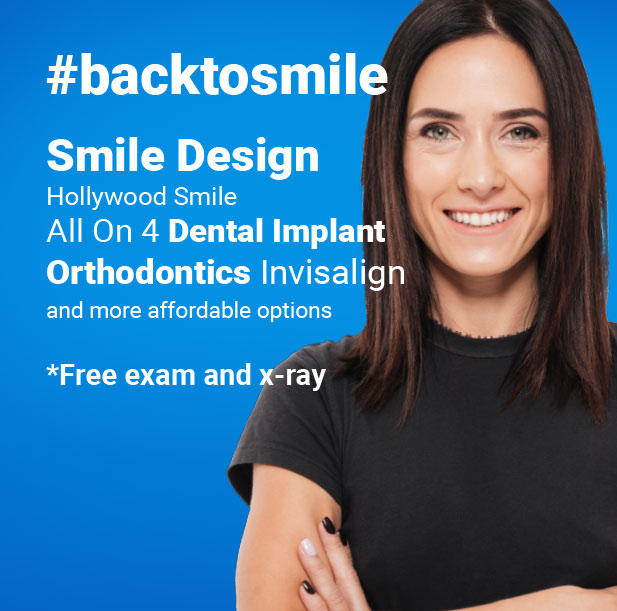While traditional dentistry focuses on oral hygiene and preventing, diagnosing and treating oral disease, cosmetic dentistry focuses on improving the appearance of the teeth, mouth and smile. In other words restorative, general and/or family dental practices address dental problems that require necessary treatment, whereas cosmetic dentistry provides elective – or desired – treatments or services.
Cosmetic treatments may also provide restorative benefits. For example, dental fillings are a common procedure used to treat decayed teeth. Previously, most dental fillings were composed primarily of gold, amalgam and other materials that left visible dark spots on the teeth.
Todays dental fillings may be considered cosmetic to a certain extent because you can select fillings made of porcelain or composite materials that closely match the color of your teeth, thus maintaining the natural appearance of your teeth and smile. Many people may choose to have their older fillings replaced with newer, tooth-colored fillings to enhance their oral appearance.
Cosmetic Dentistry Trends
Technological advancements in natural-looking, tooth-colored dental materials make today’s cosmetic dental treatments more durable and predictable than in years past. Additionally, dentists are now using more conservative techniques to preserve as much of your natural tooth structure as possible, depending upon your specific clinical situation.
Dentists may also use such technologies as lasers in order to perform some procedures necessary for cosmetic treatments in their own offices – without the need for referrals to specialists. This makes procedures such as smile makeovers more comfortable and convenient for patients, as well as helps to reduce recovery time.
Please contact via right section form without any hesitations, in order to get optimal imformation.

Beautiful teeth, healthy gums and functional harmony
Aesthetic dentistry is the field of dentistry that deals with the appearance and aesthetics of teeth.
Tooth aesthetics not only include beautiful, white teeth, but also healthy gums and the functional harmony of the rows of teeth in the upper and lower jaw.
Teeth have a major impact on a person’s appearance. Beautiful, white teeth indicate health, youth and self-confidence. Missing, ground, discoloured or defective teeth, on the other hand, affect appearance, well-being and quality of life.
Red and white tooth aesthetics
An important prerequisite for beautiful, aesthetic teeth is the harmony of red and white tooth aesthetics: white, nature-oriented teeth are surrounded by healthy, pink-red gums.
Of particular importance is the restoration of the red aesthetics for the front teeth in the upper jaw, because here they are clearly visible when talking and laughing. If a tooth is lost, there are also defects in the gums that can only be perfectly reconstructed with mostly complex pretreatment. In these cases, the specialized dentist can use a long-term temporary to shape soft tissue flaps into so-called pseudopapillary, which restore the natural gum tissue between the front teeth.
Gum treatment for periodontal disease is another area of application for red aesthetics. As a result of periodontitis, the chronic bacterial inflammation of the gums and the bone supporting structures, the gums and jawbones recede. A specialist in dental aesthetics has surgical options to rebuild bones and connective tissue. Before doing this, inflamed gums (gingivitis) and gum pockets as well as damaged teeth must be rehabilitated using special measures.
There are numerous options available to the patient for restoring the white aesthetics.
In the case of simple discolouration, the teeth can be lightened by means of bleaching. Unaesthetic and unhealthy amalgam fillings can be replaced with tooth-coloured ceramic inlays. All-ceramic or zirconium crowns enable perfect and natural dental aesthetics with a little grinding of the teeth at the same time.
With the help of thin ceramic shells, so-called veneers, which are adhesively bonded to the teeth, the dentist can correct stubborn discolouration or shorten teeth that appear longer due to the receding gums.
Abutments made of plastics or composites can also aesthetically compensate for a loss of tooth substance, especially in the anterior region.
Aesthetics and function are inseparable
The greatest challenge facing specialists in dental aesthetics is restoring the aesthetics and function of the teeth. Purely cosmetic solutions do not serve the patient. Rather, he needs solutions that enable the restoration of an undisturbed function, i.e. a harmonious occlusion of the teeth of the upper and lower jaw. Aesthetics and function are inextricably linked.
In the event of a disturbed occlusion, a so-called “wrong bite”, a functional diagnosis (functional analysis) is carried out in the dental practice in order to determine the contact relationships between the teeth of the upper and lower jaw and the position of the temporomandibular joint and trigger CMD symptoms.
The aim of therapy in CMD is to restore empathy, the functional and morphological unit of teeth, the supporting structures of the teeth, temporomandibular joints and masticatory muscles.
The connection between aesthetics and function becomes particularly clear when patients lose several millimetres of tooth substance due to bruxism/teeth grinding. The rows of teeth lose their natural shape, length and function. An abrasive bite with shortened teeth, lowering of the bite height and a horizontal chewing pattern has developed. In order to successfully rehabilitate these patients, a Complete Functional Reconstruction – CFR – must be performed.
Before performing a KFR, diagnostic splint therapy is carried out in order to achieve physiological occlusion with a correct and stable temporomandibular joint position. From this stable joint position, the necessary anterior canine guidance and the necessary posterior support can then be restored.
Collaboration of specialized dentists for good aesthetic results.
More and more patients come to the dental practice with toothache, functional dental problems and poor dental aesthetics and pose a special challenge for the practitioner.
In order to achieve good aesthetic results, different specialized dentists work together in aesthetic dentistry.


